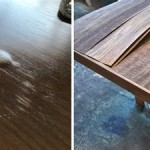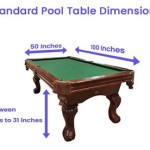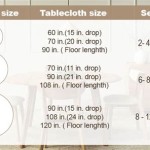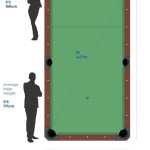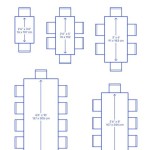10 Seater Round Table Dimensions: A Comprehensive Guide
The selection of a suitable table for any space, be it a dining area, conference room, or collaborative workspace, necessitates careful consideration of its dimensions. When considering a 10-seater round table, the dimensions become even more critical, as they directly impact the comfort and functionality of the space for all users. Choosing the appropriate diameter ensures adequate space for each person, facilitates easy conversation, and contributes to the overall aesthetic appeal of the room. This article will delve into the various factors influencing the ideal dimensions of a 10-seater round table, providing a comprehensive guide for selecting the right size.
The primary factor to consider when determining the appropriate size for a 10-seater round table is the amount of space each person requires. This space dictates how comfortably individuals can sit, eat, and participate in discussions without feeling cramped. Insufficient personal space can lead to discomfort and hinder communication, while excessive space can make conversation difficult and create a feeling of detachment.
Beyond individual space, the overall dimensions of the room in which the table will be placed are paramount. A table that is too large will overwhelm the space, making it feel crowded and difficult to navigate. Conversely, a table that is too small may appear insignificant and fail to adequately serve its purpose. Therefore, accurately measuring the room and accounting for surrounding furniture and walkways is essential for making an informed decision.
The intended use of the table will also influence the ideal dimensions. A dining table typically requires more surface area per person than a conference table, as it must accommodate plates, cutlery, glassware, and serving dishes. Similarly, a table used for board games or other interactive activities may require even more space to allow for the placement of game components and movement around the table.
Given these considerations, understanding the standard dimensions for a 10-seater round table is crucial. While there is no single definitive answer, general guidelines can help in making the right choice. The following sections will explore these guidelines in more detail.
Understanding Standard Diameter Ranges
The diameter of a round table directly determines the seating capacity and the overall space available. For a 10-seater round table, the diameter typically ranges from 60 inches to 72 inches (5 feet to 6 feet). This range provides a reasonable balance between individual comfort and effective communication.
A 60-inch (5-foot) diameter table provides a relatively compact arrangement, suitable for smaller rooms or situations where space is limited. With this diameter, each person will have approximately 18.85 inches of circumference space. While this might be sufficient for basic seating, it may feel a bit tight when considering the placement of plates, glasses, and elbows during a meal. It is often best suited for settings where physical space is prioritized over individual elbow room, such as casual meetings or card games.
A 66-inch (5.5-foot) diameter table offers a slightly more generous amount of space. Each person will have approximately 20.73 inches of circumference. This additional space can make a noticeable difference in comfort, particularly when the table is used for dining or longer meetings.
A 72-inch (6-foot) diameter table provides the most comfortable seating arrangement for 10 people within the standard range. Each person will have about 22.62 inches of circumference. This size allows for ample space for each person to eat, work, or participate in discussions without feeling cramped. While it requires more floor space, the increased comfort and functionality often make it the preferred choice.
It is important to remember that these diameters are guidelines, and the ideal size may vary depending on the specific chairs used at the table. Chairs with arms, for example, may require more space than chairs without arms. The thickness of the table's edge can also subtly contribute to the overall usable space. Therefore, it is always recommended to consider these factors when making a final decision.
Factors Affecting Ideal Table Dimensions
Several factors can influence the optimal dimensions of a 10-seater round table beyond basic seating capacity. These factors include the intended use of the table, the available space in the room, the type of chairs being used, and the desired aesthetic.
As previously mentioned, the intended use has a significant impact. A dining table requires more space per person than a conference table. For dining, it is important to consider the size of plates, glasses, and serving dishes. A minimum of 24 inches of linear space per diner is generally recommended, which would push the table diameter closer to the 72-inch (6-foot) mark or even slightly larger. For conference tables, where the primary focus is on note-taking and laptop use, a slightly smaller diameter may be acceptable, especially if space is at a premium.
Available space is a critical constraint. Before purchasing a table, meticulously measure the room to ensure that the table will fit comfortably without obstructing doorways, walkways, or other furniture. A general rule of thumb is to leave at least 36 inches of clearance between the edge of the table and any walls or other obstructions. This allows people to move around the table easily and pull out chairs without bumping into anything.
The type of chairs used can also affect the ideal table dimensions. Chairs with arms typically require more lateral space than chairs without arms. If using chairs with arms, consider increasing the diameter of the table by a few inches to ensure that everyone has enough room to sit comfortably. The overall footprint of the chair, including the base, also needs to be considered to guarantee no overlapping of chairs around the table.
Aesthetics also play a role. A large, ornate table may look out of place in a small, minimalist room. Consider the overall style and décor of the room when selecting a table. A table that complements the existing aesthetic will enhance the overall look and feel of the space.
Considerations for Optimizing Space and Comfort
Beyond selecting the right diameter, several additional considerations can help optimize space and comfort around a 10-seater round table. These include the table's base design, the type of chairs used, and the placement of the table within the room.
The table's base design can significantly impact legroom and overall comfort. A pedestal base, for instance, provides more legroom than a table with four individual legs. However, a pedestal base can be more prone to wobbling if not properly constructed. A sturdy, well-designed pedestal base is a good option for maximizing legroom. Some designs incorporate a central support ring at the floor level to enhance stability further.
The choice of chairs is equally important. Consider chairs that are ergonomically designed and provide adequate back support for extended periods of sitting. The height of the chairs should also be appropriate for the table's height. Ideally, there should be approximately 12 inches between the top of the seat and the underside of the table. Also, chairs that can be easily stacked or stored away can be useful for situations where the table is not always in use, therefore becoming a dual-purpose component of the room.
Table placement within the room is critical for flow and usability. Ensure that there is ample space around the table for people to move freely. Avoid placing the table too close to doorways or other high-traffic areas. Ideally, the table should be positioned in a way that maximizes natural light and minimizes glare. Consider the placement of electrical outlets, especially if the table will be used for meetings or conferences that require electronic devices.
Finally, consider incorporating accessories that can enhance comfort and functionality. Lazy Susans can be added to the center of the table to facilitate sharing of food or materials. Tablecloths or placemats can protect the table's surface and add a touch of elegance. Adequate lighting, both ambient and task lighting, is essential for creating a comfortable and productive environment.

8 Seater Dining Table Dimensions Google Search Room Design House Interior

50 Dining Room Table Dimensions For 12 Vintage Modern Furniture Check More At Http Www Large Sizes

4 Steps For A Dining Table Guide

What Size Dining Table Should I Buy Rustic Chic Design Large Room Sizes Dimensions

8 Ft Rectangular Banquet Table For Orange County Ca On Call Event Als

Amelia 10 Seat Rattan Dining Set 1 8m Round Table White S

Blog

Kids Tables For Orange County Ca On Call Event Als

Revit Family Rectangular Dining Tables Post Digital Architecture

Dining Table Size

